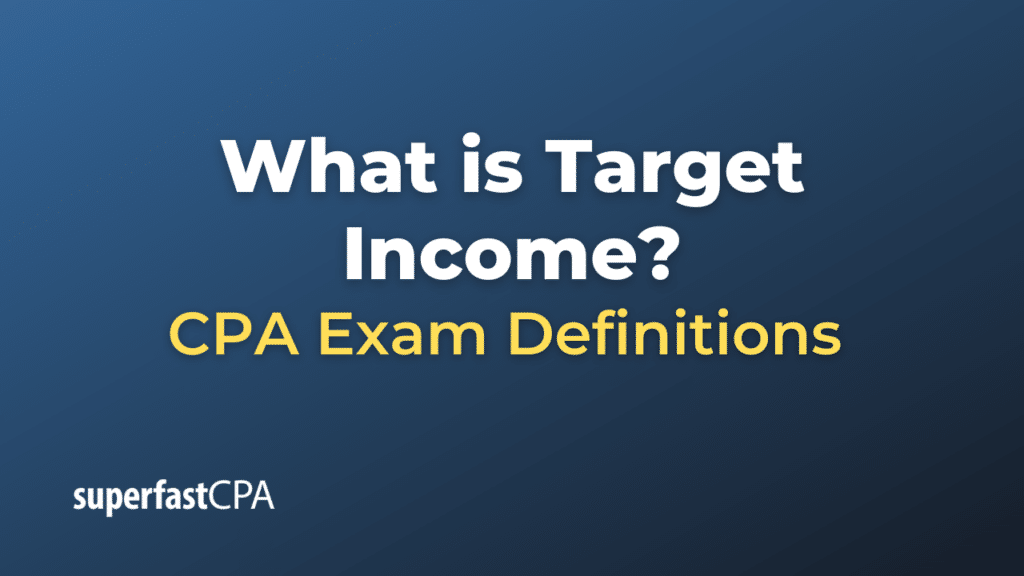Target Income
Target income refers to a specific level of profit that a company or individual aims to achieve within a certain period. Businesses often set target incomes as part of their budgeting, financial planning, or goal-setting processes. This target can serve various purposes, such as meeting shareholder expectations, ensuring company growth, covering planned investments, or fulfilling contractual obligations.
For businesses, understanding target income can also be instrumental when trying to determine the number of units of a product they must sell or the price point they need to set in order to achieve the desired profit level.
The concept can be illustrated with a basic formula:
Target Income = (Selling Price per Unit × Number of Units Sold) − Total Variable Costs − Total Fixed Costs
Where:
- Selling Price per Unit is how much the product sells for.
- Number of Units Sold is self-explanatory.
- Total Variable Costs are costs that change based on the number of units produced or sold (like materials or direct labor).
- Total Fixed Costs are costs that don’t change regardless of how many units are produced or sold (like rent or salaries of permanent staff).
With the target income in mind, a company can rearrange the above formula to determine the number of units they need to sell or the price at which they need to sell their product in order to achieve the desired profit.
Example of Target Income
Let’s use a hypothetical example involving a company that sells handmade candles.
Scenario: Bright Glow Candles wants to achieve a target income of $10,000 for the next month. To reach this goal, they need to figure out how many candles they must sell. Here’s what we know about Bright Glow’s operations:
- Selling Price per Candle: $20
- Variable Costs per Candle (materials, labor, etc.): $8
- Fixed Costs for the month (rent, utilities, insurance, salaries, etc.): $2,000
Now, let’s use the target income formula:
Target Income = (Selling Price per Unit × Number of Units Sold) − Total Variable Costs − Total Fixed Costs
Given that we’re trying to find the number of units to be sold to achieve the target income, let’s denote this number as XX. Rearranging the formula to solve for XX:
X = Target Income + Total Fixed Costs / Selling Price per Unit − Variable Cost per Unit
Plugging in the values we have:
X = $10,000 + $2,000 / $20 – $8
X = $12,000 / $12
X = 1,000
Therefore, Bright Glow Candles would need to sell 1,000 candles in the next month to achieve their target income of $10,000 (excluding any other unforeseen costs or changes in selling price).
This example showcases how target income can guide a business in setting practical sales goals based on desired profitability.













